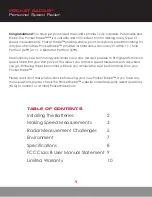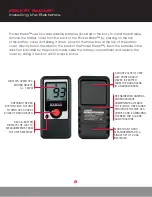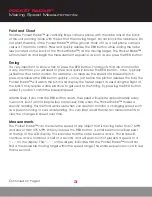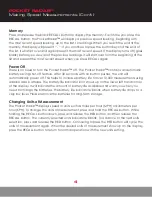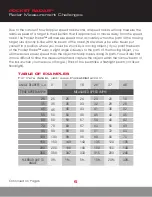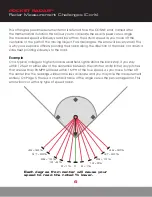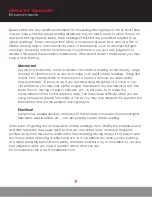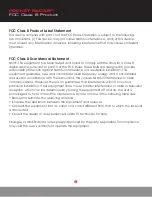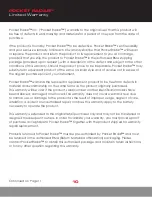
POCKET RADAR™
Making Speed Measurements
Point and Shoot
Hold the Pocket Radar™ up vertically like a camera phone with the radar lens at the back
of the unit pointing in-line with the path of the moving target. Do not block the radar lens. Do
not point the back of the Pocket Radar™ at the ground; think of it as a cell phone camera
versus a TV remote control. Press and quickly release the RED button while aiming the radar
lens (located on the back of the Pocket Radar™) at the moving target. The Pocket Radar™
will turn itself on and begin the measurement sequence as soon as you press the RED button.
Timing
It is very important to know when to press the RED button. For objects that are in motion for
a very short time, you will need to press and quickly release the RED button – once, typically
just before the start of motion. For example – to measure the speed of a baseball pitch,
press-and-release the RED button quickly – once, just before the pitcher releases the ball. The
Pocket Radar™ will watch the pitch and display the fastest object it sees during the flight of
the ball. It may require a little practice to get used to the timing. Try pressing the RED button
earlier if you don’t catch the baseball speed.
Alternatively, if you hold the RED button down, the speed will update approximately every
¾ second, but it will not be possible to precisely time when the Pocket Radar™ makes a
specific reading. This method works well when you desire to monitor a changing speed such
as a person running or cars accelerating. You can later recall the last ten measurements to
view the changes in speed over time.
Measurements
The Pocket Radar™ can measure the speed of any object that is moving faster than 7 MPH
and slower than 375 MPH. When you press the RED button, a small beam icon will appear
at the top of the LCD display. This indicates that the radar beam is active. The radar will
continue active for about a half of a second, and will search until it presents a speed or a
“- - -“ on the display. The “- - -“ on the display indicates that the Pocket Radar™ could not
find a measureable moving target within the speed range. This entire sequence occurs in less
than a second.
3
Continued on Page 4


